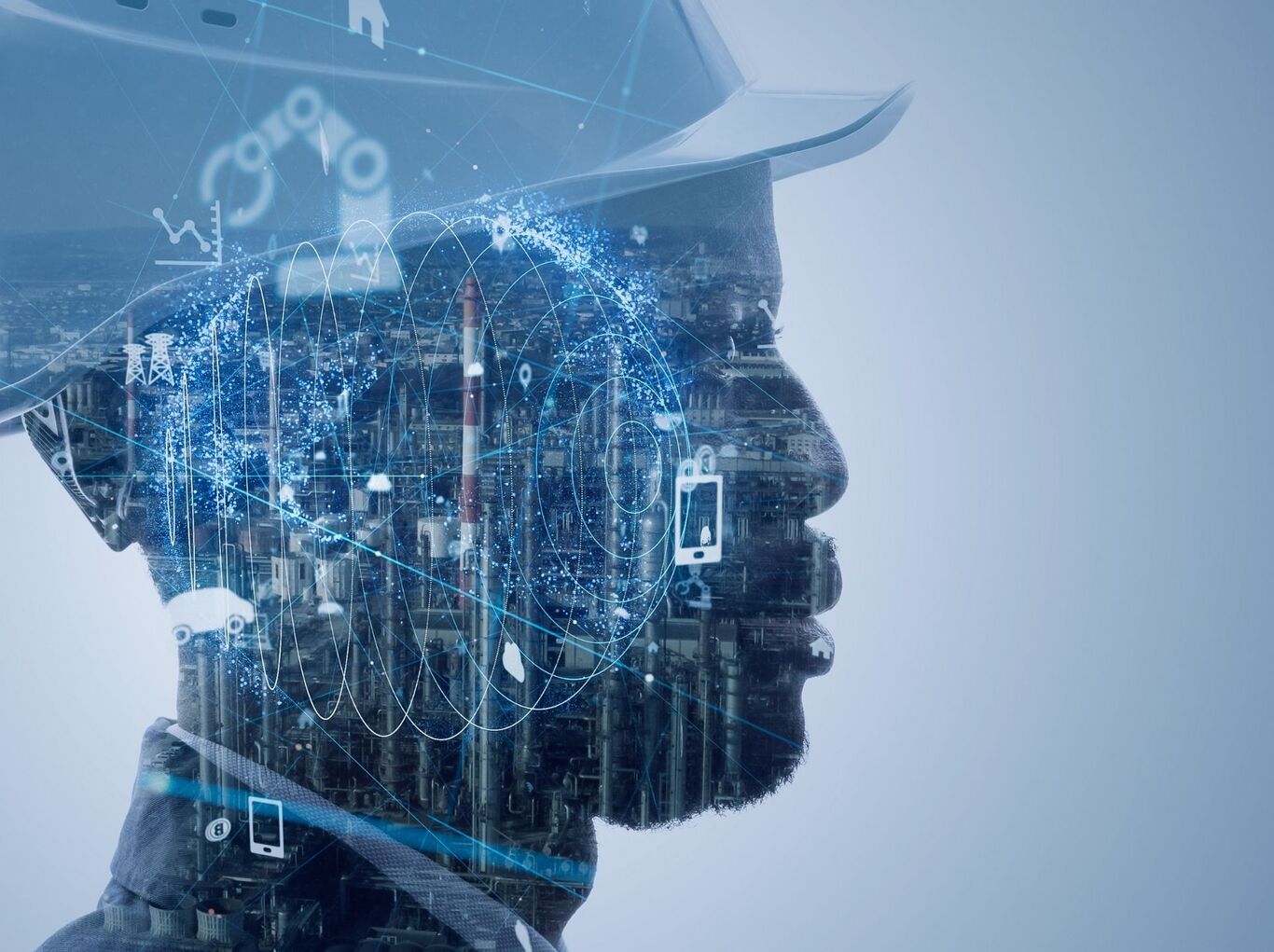Agentic AI in Healthcare Changing Patient Care 2025

Let’s picture a ward where lab alerts pop up in seconds, not hours. A smart agent spots a sharp rise in blood sugar, nudges the nurse and schedules a doctor’s call. No shouting, no missed step. That is agentic AI at work in the healthcare industry.
These systems learn from every record, scan and bedside device. They plan, act and adjust without needing fresh code each day. Agentic AI in healthcare is already being used in early diagnosis of diseases, management of chronic conditions, making treatments more effective, and streamlining hospital operations. Since the market is expected to grow at a 35-40% CAGR by 2030, it will become increasingly important.
This guide is for hospital CEOs, medical directors and IT heads. You will see real uses, clear paybacks and the guard-rails that keep patients safe.
Agentic AI and its significance in medical decision-making
The use of agentic AI in healthcare is changing everything from medical research to patient care.
The Global Enterprise AI Survey 2025 says that 86% of healthcare organisations are already extensively using AI. By 2028, the global healthcare AI market is expected to surpass $120 billion. Much of that budget is shifting from basic chatbots to models, where true autonomy beats scripted flows.
So, why does this matter? Well, agentic AI is already doing some groundbreaking things in healthcare, like:
-
Speeds up drug discovery by screening billions of compounds to find the most effective combinations.
-
Helps with clinical trials by finding patients who are qualified and keeping track of their progress during the study.
-
Reviews denied insurance claims, finds similar past cases, and auto-generates appeal letters for payers.
-
Helps with diagnoses and referrals by looking at patient records and offering treatments that will work.
-
Like a virtual assistant, it reminds patients of their appointments and medications and keeps real-time track of their health.
Core capabilities of agentic AI in healthcare
The use of agentic AI in healthcare is changing how medical professionals deliver care. These systems act with purpose, learning from data and making decisions with minimal human input. Their real strength is making medical settings more accurate, faster, and personalised.
But how? Let’s find out:
Goal-oriented diagnostic agents
These agents analyse lab reports, patient symptoms, and scan data to come up with possible diagnoses.
An article published in 2022 in Nature Medicine[1] found that AI was better at finding breast cancer than radiologists. It cut the number of false positives by 5.7% and the number of false negatives by 9.4%.
These tools help doctors make faster and better decisions by acting as medical decision support agents.
Adaptive treatment recommendation systems
These systems adjust treatments based on the patient's progress. For example, a 2020 JCO Clinical Cancer Informatics study found that Watson, an agentic AI tool by IBM[2], agreed with the choices made by expert oncologists 93% of the time.
Over time, these systems learn from outcomes, fine-tuning their suggestions and improving patient care.
AI-powered patient monitoring and alerting
AI-enabled wearables can monitor vital signs and detect early warning symptoms.
Let’s take an example: Sepsis is deadly, and quick intervention can save lives. A 2020 ArXiv study found that using AI to monitor ICU patients helped reduce mortality by 22%[3]. That’s huge.
These are part of a growing group of healthcare automation tools that make tracking better around the clock.
6 benefits of agentic AI in healthcare delivery
Agentic AI in healthcare makes systems more responsive, workflows smoother, and patient experiences better. These patient-centred AI systems are designed to think, plan, and act, helping both clinicians and patients at every stage of care.
Here is what they offer:
-
Speeding up insurance approvals: AI agents reduce delays in claims processing by checking data, tracking histories, and flagging problems early. This makes the healthcare staff's jobs easier.
-
Bringing care teams together: Agents make it easier for doctors, nurses, and support staff to stay in sync and act quickly by gathering and organising data from different systems.
-
Removing roadblocks in treatment access: AI agents efficiently handle prior authorisations by verifying all the required documents and rules. This means that patients can get the care they need more quickly.
-
Making payments smoother: They cross-check billing details, spot errors quickly, and ensure money flows between providers and payers correctly.
-
Keeping EHR management clean: Agents update electronic health records automatically. It makes sure doctors always have the most up-to-date and accurate information.
-
Creating personalised treatment plans: These agents analyse a patient's medical background, lifestyle, and other factors to make adaptive treatment planning. They change these plans over time, resulting in better, more responsive care.
4 real-world applications of agentic AI in healthcare
Agentic AI in healthcare is already changing how patients are cared for and how medical studies are done. These autonomous diagnostic systems improve patient outcomes and save lives by making clinical decisions easier. They are also lowering the cost of healthcare by speeding up the discovery of new drugs.
Let's look at five real-world use cases where agentic AI is already making a measurable impact.
-
Sepsis alerts that save lives
UC San Diego Health[4] rolled out “COMPOSER,” an AI agent that watches 150 live data points the moment a patient enters the emergency department. In a 6,000-case study published in January 2024, the system cut sepsis deaths by 17% and flagged risk hours before symptoms became obvious.
That is a great example of how intelligent health monitoring using artificial intelligence systems helps.
-
Google DeepMind’s AlphaFold
AlphaFold from Google DeepMind can accurately guess 3D protein shapes more than 90%[5] of the time. This discovery accelerates the process of developing new drugs and reduces the time scientists spend in biological research labs by months or even years.
-
Portable eye screening in one minute
In May 2024 the FDA cleared the Optomed Aurora[6] handheld camera paired with AEYE Health’s autonomous algorithm.
A nurse snaps two retinal photos; the agent rules in or out diabetic retinopathy on the spot. The aim is to protect the sight of the 500 million people at risk worldwide, with no specialist needed.
-
Babylon Health
Babylon's AI-powered mobile app offers virtual consultations, triage, and autonomous diagnosing systems. It helped more than 6 million people worldwide in 2023, making healthcare 45% easier to get in areas that didn't have enough of it.
Large chains are moving fast. Apollo Hospitals told Reuters in March 2025 that it is upping AI spend to automate documentation, suggest antibiotics and free clinicians two to three hours a day. Expect the global breakthroughs above to reach Indian wards sooner than most boards think.
Check out some of the best agentic AI examples and use cases
Challenges and ethical concerns in agentic AI healthcare systems
In medical settings, agentic AI offers powerful systems like AI-driven patient triage, but it also brings up several challenges and ethical concerns, such as:
-
Data privacy and bias: Sensitive medical data is hard to access and protect. When AI models are taught on unbalanced data, they might show biases, which can harm vulnerable groups.
-
Regulatory hurdles: Rapid AI advances outpace current healthcare laws. Continuous learning AI makes decisions harder and needs close supervision.
-
Integration and trust: AI tools must fit into clinical workflows smoothly. Without explainability, clinicians may hesitate to rely on AI decisions.
-
Accountability: When AI causes errors, it’s unclear who is responsible. Legal frameworks are needed for healthcare workers, and AI outputs need to be clear.
-
Human oversight: Increasing AI autonomy makes real-time tracking harder. Combining human and AI judgment in hybrid methods helps keep things safe and controlled.
Agentic AI vs. traditional healthcare AI models
Traditional AI is based on set rules and limited learning, so it doesn't always work well in dynamic environments. On the other hand, agentic AI in healthcare creates flexible, autonomous systems that can handle challenging tasks like personalised care and medical imaging.
Let’s find out some more differences:
| Aspect | Traditional AI Agent | Agentic AI |
|---|---|---|
| Reasoning Approach | Uses domain-specific algorithms like rules or finite state machines. <br>E.g., a chatbot answering fixed medical FAQs. | Uses natural language reasoning with large language models (LLMs). <br>E.g., an AI assistant answering open-ended medical questions based on patient history. |
| Domain Flexibility | Built for one specific task. <br>E.g., generates structured reports or classifies data based on set rules. | Handles multiple tasks using few-shot learning or dynamic prompts. <br>E.g., summarises reports and supports diagnostics. |
| Decision Structure | Follows fixed rules and goals. <br>E.g., uses guidelines to triage emergency cases. | Plans iteratively and sets its own sub-goals. <br>E.g., adjusts triage decisions based on real-time patient data. |
| Data & Training | Trained on specific, structured datasets like EHRs. <br>E.g., model trained only on hospital records. | Pretrained on vast, diverse medical texts. Learns quickly with minimal examples. <br>E.g., adapts to new diseases or guidelines. |
| Tool Integration | Works in isolation with limited tools. <br>E.g., detects anomalies in CT scans as a standalone app. | Connects with APIs, lab data, and knowledge bases. <br>E.g., combines lab results, EHR, and literature to support complex diagnoses. |
| Explanations | Transparent with basic systems like decision trees. <br>E.g., explains drug choices through simple models. | Mostly black-box but improving. <br>E.g., uses attention maps or counterfactuals to explain treatment suggestions. |
| Primary Use Cases | Used in robotics, rule-based decision making. <br>E.g., a robotic system following predefined surgical steps. | Broad applications across healthcare. <br>E.g., virtual assistants, personalised medicine, treatment planning, robotic surgery, and more. |
Future outlook: Agentic AI in hospitals and home care
The use of agentic AI in healthcare is going to impact how hospitals and home care work, making care more personalised and efficient. These systems will help healthcare workers do a better job of taking care of patients by focusing on AI in clinical workflow optimisation.
Here is how:
-
Agentic AI will enable real-time care orchestration. It will coordinate care tasks like monitoring and decision-making immediately to meet patients' needs quickly and accurately.
-
AI will connect multiple healthcare devices and platforms to create smart healthcare agent networks that share information safely. This will help ensure patients receive the same level of care at home as in hospitals.
-
Although AI will support clinicians in making some of the most complicated decisions, human judgment will continue to be the most important factor in patient care.
-
Edge devices that bring AI processing closer to patients will make care faster and more accessible. This will be especially helpful for people receiving care at home with limited internet access.
Read more about what the future of agentic AI looks like in 5 years
Wrapping up: Your next move towards autonomous healthcare using agentic AI
Agentic AI has moved from proof-of-concept to bedside reality. Hospitals that use autonomous diagnostic systems and real-time care orchestration now treat critical cases sooner, fill theatre schedules smarter, and cut routine paperwork in half. The gains are measurable: shorter stays, healthier margins, and happier clinicians.
Making this shift demands clear goals, strong data governance, and a partner who understands both code and care. GrowthJockey delivers AI and ML solutions that guide boards through pilot design, vendor selection, and staff upskilling ensuring new tools slot neatly into existing workflows.
With the right roadmap, a single ward pilot can mature into a hospital-wide engine for safer, faster treatment. The next step is simple: pick one bottleneck, test an agentic solution, and track the impact week by week. Results build confidence, confidence drives scale, and scale secures your place among the leaders of modern medicine.
Agentic AI Across Different Industries
Agentic AI is serving as a catalyst for widespread industrial transformation, promoting intelligent, autonomous decision-making. Explore how it's being applied across sectors like healthcare, retail, education, legal, and more to drive innovation and efficiency.
FAQs on agentic AI in healthcare
1. How is agentic AI in healthcare improving patient outcomes?
Agentic AI in healthcare blends intelligent health monitoring with patient-centred AI systems. Sensors feed live data to medical decision support agents that spot sudden changes and suggest action.
Early alerts mean faster intervention, shorter stays and fewer readmissions. Hospitals report sharper diagnostic accuracy and higher patient-satisfaction scores after rolling out these adaptive tools.
2. What are autonomous diagnostic systems in medicine?
Autonomous diagnostic systems use agentic AI to read scans, lab values and clinical notes without constant human guidance. They rank probable conditions and recommend next tests, speeding decision-making.
Real-time care orchestration ensures findings reach the right clinician instantly. This reduces missed diagnoses and lets specialists focus on complex cases rather than routine triage.
3. How does AI-driven patient triage work in busy emergency rooms?
AI-driven patient triage tools analyse vitals, symptoms and history at check-in. The agent assigns risk levels, flags red alerts and routes patients to the right bay. These healthcare automation tools shave minutes off critical hand-offs, easing crowding and protecting staff from overload. Hospitals using them see faster door-to-doctor times and lower wait-room stress.
4. What is adaptive treatment planning, and why does it matter?
Adaptive treatment planning uses agentic AI to update therapies as a patient’s condition changes. Algorithms watch new labs, imaging and bedside notes, then fine-tune drug doses or therapy schedules.
Medical decision support agents suggest each change, giving clinicians evidence they can accept or reject. Results include tighter control, fewer side-effects and more personalised care paths.
5. How can hospitals start with agentic AI for clinical workflow optimisation?
Begin with one high-impact process such as discharge planning or ICU monitoring. Map data sources, choose healthcare agent networks that integrate with existing EHRs and set clear success metrics. Partner with specialists like GrowthJockey to manage governance, bias testing and staff training. A focused pilot proves value fast and builds momentum for wider rollout.








